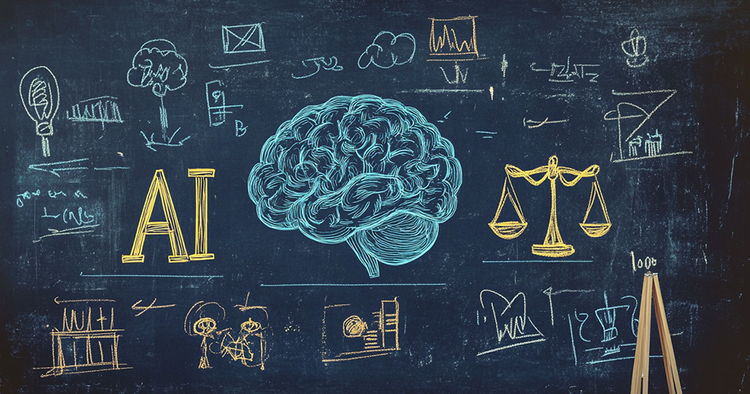The Future of AI in Arbitration: How Technology Is Changing ADR

As in most legal processes, time has always been a premium in arbitration and other forms of alternative dispute resolution (ADR). Disputes pile up, documents multiply, and proceedings stretch into days, sometimes weeks, of meticulous, costly labor. For years, the industry has sought ways to accelerate these methods and make them more efficient without compromising fairness. Arbitration, a once leaner alternative to court, has become weighed down by the very rigor that defines it. Then came artificial intelligence (AI).
AI has the potential not just to speed up arbitration but to transform it. Recent innovations in classic machine learning tools like (speech-to-text algorithms) as well as modern generative AI systems (with appropriate security safeguards) offer solutions that many practitioners—73%, according to a Wolters Kluwer survey—are integrating or preparing to integrate into their daily workflows. This isn’t just about software making tasks in ADR easier; it’s about generating better, more efficient, more consistent outcomes for your clients and changing the nature of dispute resolution itself. Emerging tools can partially automate vast document reviews, transcribe conversations precisely, and support sophisticated analysis of complex cases. Once processed by sheer human effort, ADR now has new partners in AI technology.
Legal tech companies like Prevail are at the frontier, offering AI-driven tools to streamline each ADR step. These tools enable real-time transcription, instant analysis of the record, and complex data handling, all designed to cut hours from traditionally labor-intensive tasks. For ADR, the future rests in human expertise and collaboration with intelligent systems that promise greater efficiency and accessibility while maintaining accuracy and fairness.
AI’s Impact on Arbitration
AI in arbitration is quickly evolving beyond auxiliary support. First and foremost, AI-powered document review tools are transforming the traditionally labor-intensive process of document analysis. Once constrained by time and the risk of human error, arbitration teams can now rely on AI systems that comb through extensive records and identify relevant clauses, case details, and inconsistencies with incredible precision. This transformation isn’t just about speed; it’s about accuracy, as these tools help reduce human error that might slip through in document-heavy cases. The result? Faster, more comprehensive document review and more time for strategic decision-making.
Arbitrator selection is another area seeing AI’s influence. Traditionally, this process relied on word-of-mouth recommendations, referrals, and limited historical information. Today, AI allows for a thorough analysis of arbitrators’ past decisions, insights into their expertise, and identification of any unconscious biases—all helping to guide an informed, data-backed choice. This analytical approach provides a more objective framework for selection, which can, in turn, reduce procedural objections and perceived unfairness—crucial in ensuring trust in ADR outcomes.
AI’s predictive capabilities are also beginning to shape arbitration strategy. By analyzing historical data, AI can provide probable outcomes for specific cases. For instance, arbitrators now have tools that give them a clearer picture of potential resolutions and settlements based on previous case outcomes and real-time factors. This predictive analysis helps attorneys assess likely scenarios, adjust their arguments, and approach negotiations with greater insight and confidence.
The collective impact of these AI-driven efficiencies is striking. By automating traditionally repetitive tasks and making case preparation more efficient, these tools are helping to drive down costs and improve the accessibility of ADR. More than simply speeding up workflows, AI is reshaping how arbitration is approached—from document analysis to strategic forecasting—giving legal professionals a chance to focus on the human elements of dispute resolution that machines cannot replace.
The Benefits of AI for Fair and Efficient ADR Proceedings
One of AI’s greatest strengths in ADR is the potential for consistency. When AI tools apply data-driven analyses across similar cases, they help standardize decision-making by minimizing subjective discrepancies. In arbitration, consistency is especially essential. Variations in rulings due to individual arbitrators’ preferences or interpretive styles can lead to conflicting outcomes, a significant issue in multi-jurisdiction disputes. With AI, parties and practitioners alike can rely on a more uniform application of facts and precedents, supporting a more predictable and stable ADR process.
AI’s efficiency benefits also help broaden access to ADR. By automating costly and repetitive tasks, AI lowers the expenses typically associated with arbitration, making it a more viable option for smaller firms and individual litigants who may otherwise be priced out of traditional dispute resolution. The emergence of AI-powered online dispute resolution platforms is another milestone in accessibility, allowing more parties to participate in arbitration without needing physical hearings or extensive resources.
Looking Ahead: The Future of AI in ADR
As AI advances in ADR, forward-thinking companies like Prevail are charting a course that doesn’t just add technology to the mix but uses it to make arbitration more accessible, transparent, and efficient, driving better results. Imagine virtual mediation platforms that eliminate geographical barriers or AI tools that can provide real-time analysis of ongoing cases. These aren’t just hypotheticals. They represent realistic shifts in ADR that tech-powered tools, guided by a commitment to fairness, make possible. Yet, the path forward for AI in ADR is as much about innovation as it is about regulation, which ensures that the technology serves everyone equitably.
Compliance is essential as regulatory bodies set high standards for AI usage, including ADR applications. For instance, the Colorado bill, SB24-205, requires developers of high-risk AI systems to “use reasonable care to protect consumers from any known or reasonably foreseeable risks of algorithmic discrimination in the high-risk system,” a vital guardrail for AI tools. Meeting and exceeding these standards is non-negotiable as legal professionals utilize AI in ADR. Ethical practices help ensure that while AI-driven tools provide valuable insights, human judgment remains integral. It’s about making AI a facilitator, not a decision-maker.
Prevail’s approach is already transforming how parties engage in arbitration. For example, users experience significant cost benefits—Prevail’s services offer a full-day arbitration hearing transcript at 54% lower costs than traditional court reporting firms. This cost-effectiveness brings ADR within reach for smaller firms and opens the door for more parties to consider arbitration over prolonged litigation. With the right balance of transparency, oversight, and efficiency, Prevail isn’t just contributing to the future of AI in ADR; it’s setting the pace for a responsible, human-centered approach.
This blend of technology and human insight ensures each case is approached with the necessary fairness and ethical diligence, preventing the pitfalls of pure automation. For legal professionals, the future of ADR lies in responsibly harnessing these AI-powered tools. As companies like Prevail demonstrate, the path forward is one where AI supports—not replaces—the nuanced judgment critical in legal contexts. By exploring how these tools can enhance their work, attorneys can embrace a future where dispute resolution is more efficient and equitable.




